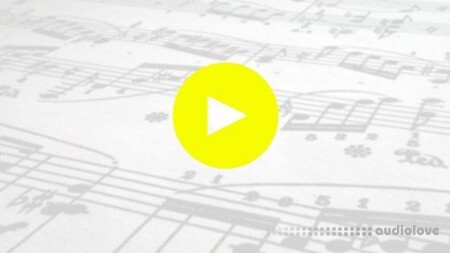Udemy Trinity Grade 3 Music Theory [TUTORiAL]

P2P | 24 October 2024 | 256 MB
This Grade 3 Music Theory video courses covers the Trinity syllabus in full.
Rhythm
Pitch
What you'll learn
home page
Rhythm
- Compound time (time signatures of 6/8, 9/8 and 12/8 )
- Grouping semiquavers and semiquaver rests in simple and compound time (16th notes and rests)
- Dotted quavers and dotted quaver rests in simple and compound time (dotted 8th notes)
- Rules for grouping note and rest values within 6/8, 9/8 and 12/8 time signatures
- Quaver triplets (8th note triplets)
- Anacrusis
- Ties using new note values
Pitch
- Naming and using notes in treble or bass clefs (to three ledger lines above or below the stave)
- Bb and D major keys (for all major keys for the grade: scales, key signatures, one-octave arpeggios, broken chords and tonic triads (root or first inversion)
- G and B minor keys (for all minor keys for the grade: scales - natural (Aeolian mode) and harmonic and melodic, key signatures, one-octave arpeggios, broken chords and tonic triads (root or first inversion)
- Second inversions of major and minor tonic triads of keys covered so far
- Identifying the key of a piece in Bb or D major and G or B minor
- 5th degree of the major/minor scale being known as the dominant or soh (major keys only)
- Dominant triads for all keys covered so far
- Major/minor dominant triad labelled:
- — as a chord symbol above the music (e.g. G in the key of C major or Em (E where the 7th
- degree is raised) in the key of A minor)
- — as a Roman numeral below the music (e.g. V in the key of C major or v (V where the 7th degree
- is raised) in the key of A minor)
- 7th degree of the major/minor scale being known as the leading note
- Understanding the term ‘chord progression’
- Recognising a perfect cadence in the home key (major or minor)
- Intervals (major/minor 6th, major/minor 7th above any tonic for the grade)
- Writing tonic chords in root position in any key for the grade as well-balanced 4-part chords for SATB
- Real and tonal sequences
- Similar and contrary motion
- Transposing a tune up or down an octave from treble clef to bass clef and vice versa
- Ranges of violin, flute, cello, bassoon, as defined in the workbook
- Knowing that violin and cello are string instruments, flute and bassoon are woodwind instruments
- Musical terms and symbols
What you'll learn
- Pass Trinity Grade 3 Music Theory with Distinction!
- Build on your knowledge of how music works, and how to pass the Trinity exam
- Further your skills in composition and harmony
- Practise your skills with the included PDF, exercises and tests!
home page
Only registered users can see Download Links. Please or login.


No comments yet